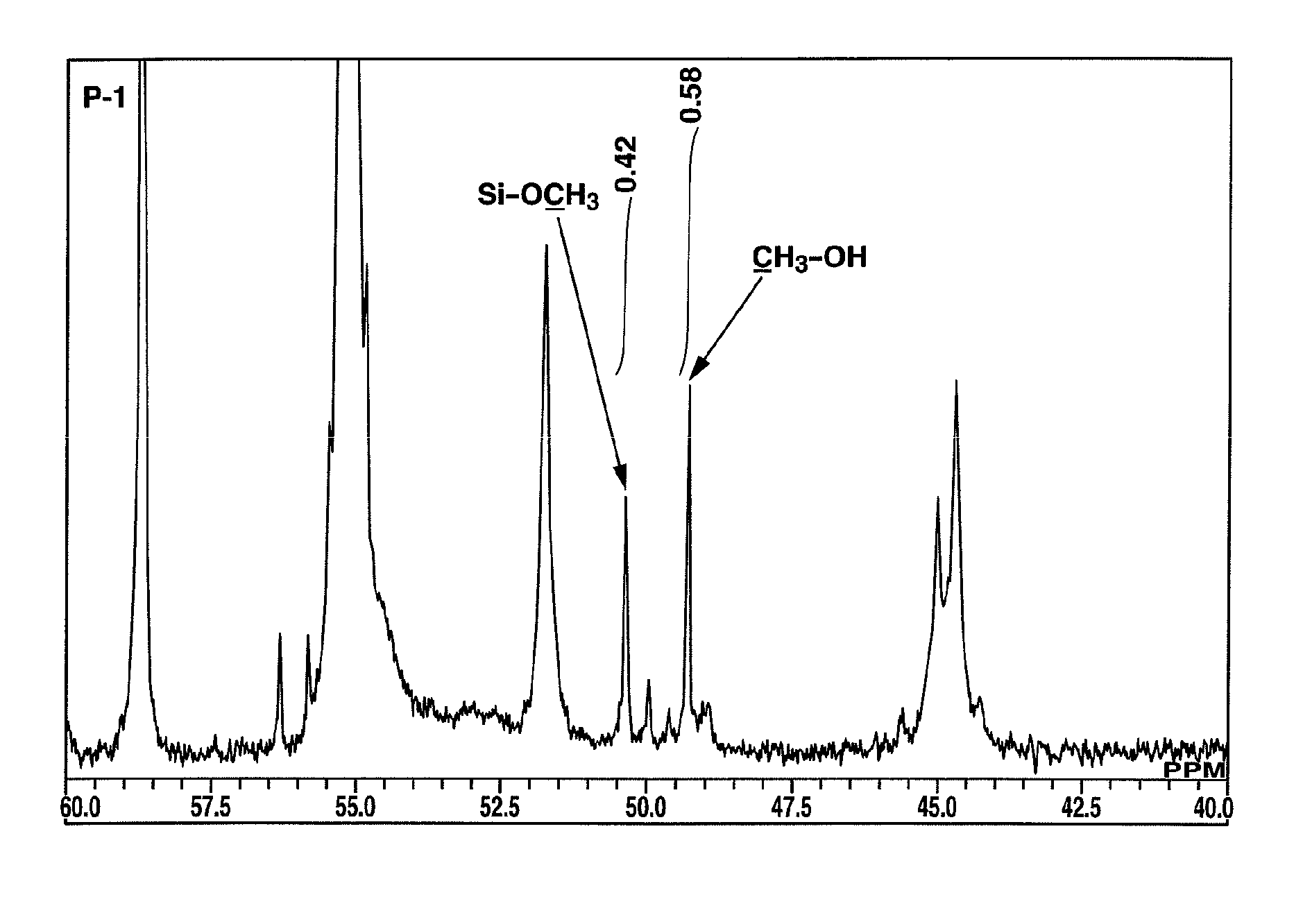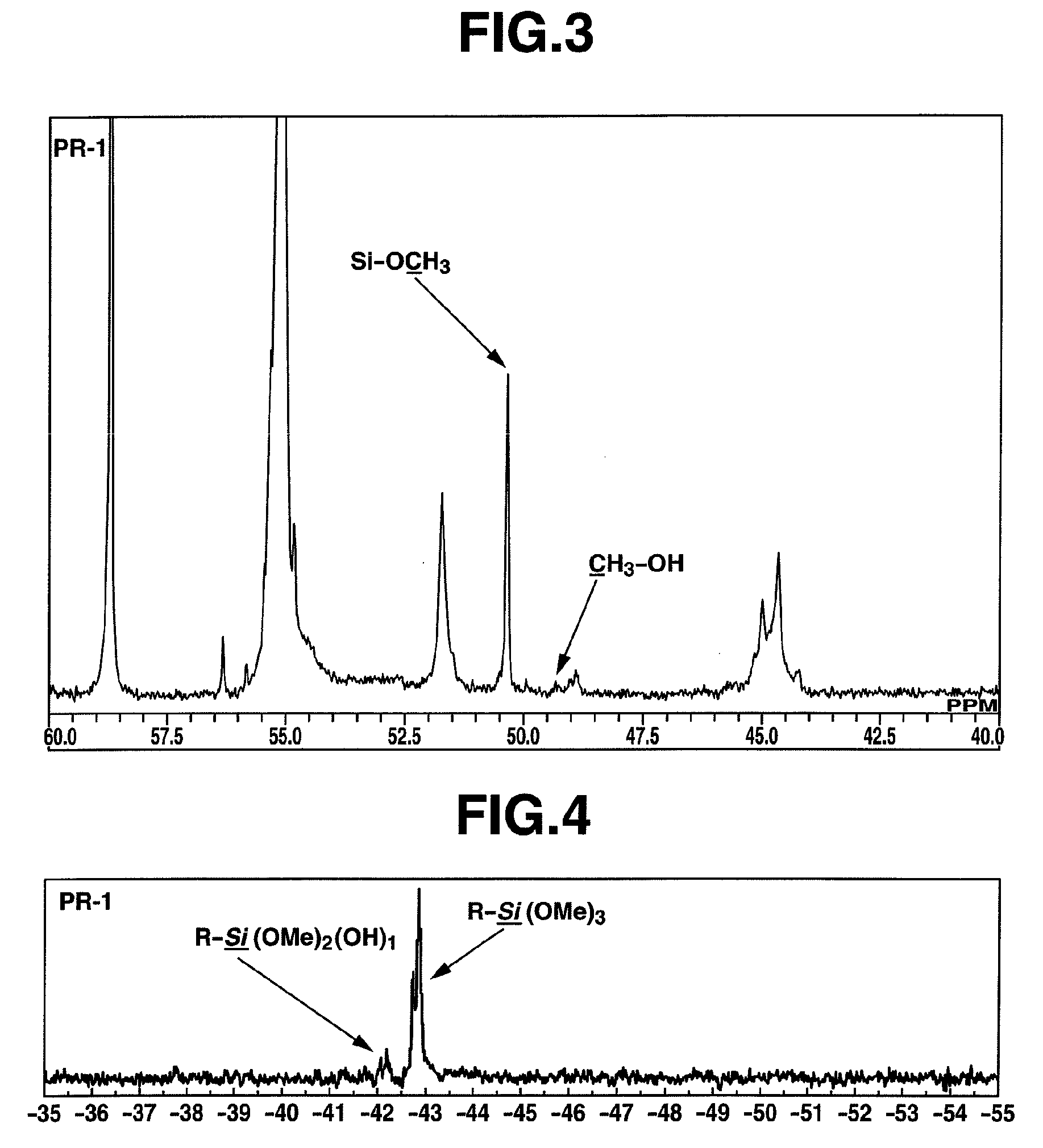Method for preparing a primer composition and coated product
a technology of primer composition and coating product, which is applied in the direction of coating, transportation and packaging, layered products, etc., can solve the problems of poor surface characteristics such as scratch resistance and weatherability, poor adhesion between the primer layer and the primer layer, and large amount of uv absorber to the primer layer, so as to improve the lightfastness remarkably, reduce the linear expansion coefficient, and improve the effect of lightfastness
- Summary
- Abstract
- Description
- Claims
- Application Information
AI Technical Summary
Benefits of technology
Problems solved by technology
Method used
Image
Examples
synthetic example 1
[0244]152 g of diacetone alcohol was charged, as a solvent, into a 2-litter flask equipped with an agitator, a condenser and a thermometer and heated in a stream of nitrogen at 80° C. A 240 g portion of a preliminarily prepared solution of a monomer mixture (81 g of 2-[2′-hydroxy-5′-(2-methacryloxy-ethyl)phenyl]-2H-benzotriazole (RUVA 93, made by Otsuka Chemical Co., Ltd.), 90 g of γ-methacryloxypropyltrimethoxy-silane, 256.5 g of methyl methacrylate, 22.5 g of glycidyl methacrylate and 350 g of diacetone alcohol) and a 54 g portion of a preliminarily prepared solution of 2.3 g of 2,2′-azobis(2-methylbutyronitrile) serving as a polymerization initiator dissolved in 177.7 g of diacetone alcohol were successively charged. After reaction at 80° C. for 30 minutes, the remaining portion of the monomer mixed solution and the remaining portion of the polymerization initiator solution were simultaneously dropped in the reaction system in 1.5 hours at 80 to 90° C., followed by agitation at 8...
synthetic example 4
[0247]222 g of N-2-(aminoethyl)-3-aminopropyltrimethoxysilane and 242 g of hexamethyldisilazane serving as a silylizing agent were charged into a 2-liter flask equipped with an agitator, a condenser and a thermometer and heated in a stream of nitrogen at 120° C., in which 496 g of γ-glycidoxypropylmethyldiethoxysilane was dropped for reaction. After agitation under heating at 120° C. for 5 hours, low boiling fractions were removed under a reduced pressure at 100° C., thereby obtaining 862 g of a viscous compound having a viscosity of 1,387 mPa-second.
[0248]Next, 862 g of this reaction product and 862 g of toluene were charged into a 2-liter flask equipped with an agitator, a condenser and a thermometer, in which 143 g of acetic anhydride was dropped for reaction in a stream of nitrogen at room temperature. After agitation under heating at 110° C. for 2 hours, 141 g of methanol was dropped at 50° C., followed by further thermal agitation at 50° C. for an hour and removal of low boili...
synthetic example 5
[0251]336 g of methyltriethoxysilane and 94 g of isobutanol were charged into a 1-liter flask equipped with an agitator, a condenser and a thermometer and kept at 5° C. or below while agitating under ice cooling, to which 283 g of an aqueous colloidal silica dispersion (Snowtex O (with an average particle size of 15 to 20 nm), made by Nissan Chemical Industries, Ltd., a product containing 20% of SiO2) kept at not higher than 5° C. was added, followed by agitation under ice cooling for 3 hours and further under conditions of 20 to 25° C. for 12 hours. Thereafter, 27 g of diacetone alcohol and 50 g of propylene glycol monomethyl ether were added to the reaction system. Next, 3 g of a 10% sodium propionate aqueous solution and 0.2 g of polyether-modified silicone KP-341 (made by Shin-Etsu Chemical Co., Ltd.) serving as a leveling agent were further added, followed by adjusting a pH to 6 to 7 by means of acetic acid. The reaction system was so controlled with isobutanol that the nonvola...
PUM
| Property | Measurement | Unit |
|---|---|---|
| particle size | aaaaa | aaaaa |
| size | aaaaa | aaaaa |
| temperature | aaaaa | aaaaa |
Abstract
Description
Claims
Application Information
 Login to View More
Login to View More - R&D
- Intellectual Property
- Life Sciences
- Materials
- Tech Scout
- Unparalleled Data Quality
- Higher Quality Content
- 60% Fewer Hallucinations
Browse by: Latest US Patents, China's latest patents, Technical Efficacy Thesaurus, Application Domain, Technology Topic, Popular Technical Reports.
© 2025 PatSnap. All rights reserved.Legal|Privacy policy|Modern Slavery Act Transparency Statement|Sitemap|About US| Contact US: help@patsnap.com



